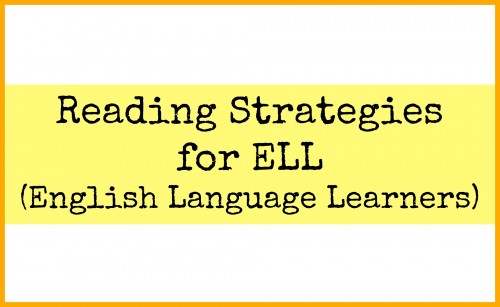As teachers receive more and more ESL/ELLs (English Language Learners) into their classrooms, it’s important that they learn to integrate them with the rest of their student population. The following reading strategies will help you with the process. Comprehensible instruction and opportunities for verbal interaction will motivate students to engage in learning and actively participate in classroom activities.
Here are some great reading strategies from this IGCSE English tutor to help ELLs be more comfortable with reading.
Echo Reading
Use this strategy to help struggling readers with fluency, pronunciation, intonation, vocabulary, and reading comprehension. The teacher (or other native English speaker) reads the text first, using proper intonation and a good pace. Students follow along silently and then “echo”, or imitate, the first reader.
Echo reading helps ELL students
– Improve sight reading and speaking skills.
– Build confidence in their pronunciations.
– Remember important concepts.
Ways to Use Echo Reading: During chants, jingles, songs, poetry, and short stories.
Tips for Teaching this Strategy:
– Use gestures to show students which text to read.
– Have students who are native English speakers lead the reading; it’s helpful for ELLs to hear voices similar to their own.
– Adjust the length of the text being read to meet the needs of your students. (e.g., for Emerging ELLs, the first reader should read one line of text; for Developing ELLs (and higher levels), the first reader can read several lines of text.)
Sample Activity:
Hold a hand to an ear to demonstrate the idea of hearing an echo. Explain that bats use echoes and different tones to locate food sources and other important information. Vary the pitch (higher or lower) while reading to encourage students to practice different intonations when they echo read.
Directed Reading-Thinking Activity (DRTA)
Use this strategy to model how to make and confirm predictions. Here are the steps to DRTA:
1) Choose a text. Preselect stopping points where students can pause while reading.
2) Preview keywords or pictures. Ask questions to guide students’ thinking.
3) Have students make predictions about what they will read.
4) Stop at set points so students can check predictions, revise them, and make new predictions.
5) Ask questions to help students match their predictions to the reading.
6) Discuss what has been read before reading the next section.
Examples: Use objects or pictures to preview a text and make predictions; ask questions about keywords and vocabulary; focus on characters and what they might do.
Tips for Teaching this ELL Strategy:
– Use as a whole-class or small-group activity.
– Remind students to use what they already know to make predictions.
Sample Activity:
Have students look at pictures in a book to predict what a story or text might be about. Have them write one or two questions they have about the story. Review the students’ questions to determine where to stop and discuss the story. Read the selection as a class, pausing as planned. Call on the students who wrote questions related to that part of the story, and conduct discussion about the reading thus far.
For more strategies on teaching ESL/ELLs, see Strategies to Use with Your English Language Learners

